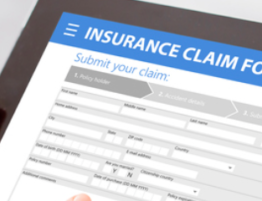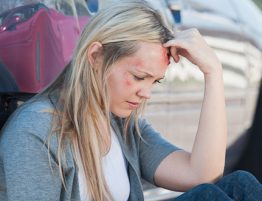
If you’ve owned a motorcycle for any length of time, you’ve likely heard the saying that there are two kinds of riders. Those who have gone down, and those who will. The odds of crashing on a motorcycle are pretty high if you put more than few hundred miles a year on your bike. All the care and caution in the world can only do so much. The severity of the crash is usually what we concern ourselves with as a rider. You might have something as simple as taking a slow turn in a residential neighborhood, catching some water or gravel in a corner and the back tire comes out from under you. You go sliding down the road but other than a bump or some road rash, the only real injury is to your pride. Or you’re one of those unlucky people who are zipping down a road and someone pulls out from a side street right into their path. A horrendous t-bone crash ensues at speed, and you, your bike and the car you hit are in rough shape. Now what?
We’ll examine this from the point of view of the rider first. We will also assume you have a helmet and appropriate riding gear on. If you took the Motorcycle Safety Foundation course, your instructor likely told you to dress for the crash, not the ride. Boots or shoes made for riding are tough. Riding pants are generally cut to allow generous seat, hip, thigh and knee movement, while being made of tough materials and rugged construction. Armored gloves, a leather or abrasion-resistant textile jacket, and a full-face helmet. But even the best gear can’t prevent broken bones, torn ligaments, etc. We are looking at serious injuries requiring expensive medical treatment.
While the gear list might seem excessive, there is another good reason to wear it, beyond preventing injury. Insurance companies could very well require you to wear protective equipment beyond a helmet (usually DOT approved if in the USA) to get coverage beyond basic liability. More importantly, if you don’t wear the gear, your insurance company might try to deny your claims. If you think a full thickness skin graft is painful after your t-shirt provided no protection and the road ate your hide, wait until your insurance company refuses to cover the cost!
But what if you’re in a state without a helmet law? Well, don’t think that guarantees you any extra protection from insurance adjusters. Motorcycles are seen as risky and your policy may indeed require you to wear a helmet (or more!) if you want medical pay coverage or any additional bodily injury or disability coverages for yourself. And the disability coverages are not to be overlooked! If you work with your hands for a living, breaking the small bones of the hand or ripping a tendon from a moderate speed crash might put you out of action for months and months while you heal or require surgeries.
You pull out from a side street onto a main road and before you can react, there is a roaring engine and a loud crash! Broken glass covers the ground as you get out. You see blood on the ground…what happened? That motorcycle came out of nowhere! He must have been flying down the road, well in excess of the speed limit! You as the driver need to be very aware of what to do next in such a situation. Step One: immediately call 911. The rider is likely hurt and will need help. You also should have the EMTs give you a once-over, even if you don’t think you’re hurt. Step Two: Move your car if you can, but don’t disturb the scene. If moving your car means disturbing possible evidence, leave the car where it sits. Get yourself away from traffic, sit down and try to collect yourself. Grab your license, registration and insurance if it’s safe to do so, and wait for the police. Step Three: Try to give as accurate of an account of the accident to the officer as is possible. Don’t guess, don’t try to elaborate, remember Dragnet; “Just The Facts Ma’am”. NEVER admit that you might have been distracted or not paying attention!! If someone has been injured or worse, killed in an accident with a car you were driving, the situation can be serious if the police suspect you might be negligent. Just give honest answers to the police. Let the professionals investigate and fill in the details, and do yourself a favor and be quiet. No need to make things worse for yourself by trying to be helpful and adding details that might not be accurate.
Step Four applies to both riders and drivers involved in an accident. Go to your doctor as soon as you can. Get checked out, even if you think you’re fine. Nevada offers a pretty generous period in which you can file a complaint to recover damages, up to two years. But, if you don’t get documentation and don’t cover your bases, you’ll find it very difficult to get any relief from mounting medical bills as time goes on. Let’s say you as the rider landed on your shoulder in the crash and you thought it was simply sore from hitting the pavement. You wait a couple weeks and it’s not much better. You go to the doctor and discover you have a real injury that isn’t healing correctly. But you’ve been working and picking up your kids and throwing the baseball around with your kid’s little league team. An insurance company will have a very compelling argument that what was a minor injury, was exacerbated by you not seeking medical attention for an injury.
Remember before when I mentioned states that don’t require helmets? Your insurer may still require that you wear one. Getting caught without one, could get your policy cancelled. But more importantly, helmets save lives.
The CDC shows that as of 2016, a rider’s chance of living through a serious crash is more than 35% better if they are wearing an approved (DOT, SNELL, ECE or BSI) helmet. Helmets absorb the energy from a crash and spread the impact out over a greater area and a greater period of time. Helmets are also a single use item. If your helmet has been involved in a crash and has absorbed an impact, it’s done. Time for a new one. A good helmet is the cheapest piece of insurance you’ll buy for your motorcycle and it has a very good chance of saving your life. Wear your gear. All the gear. Every ride.




